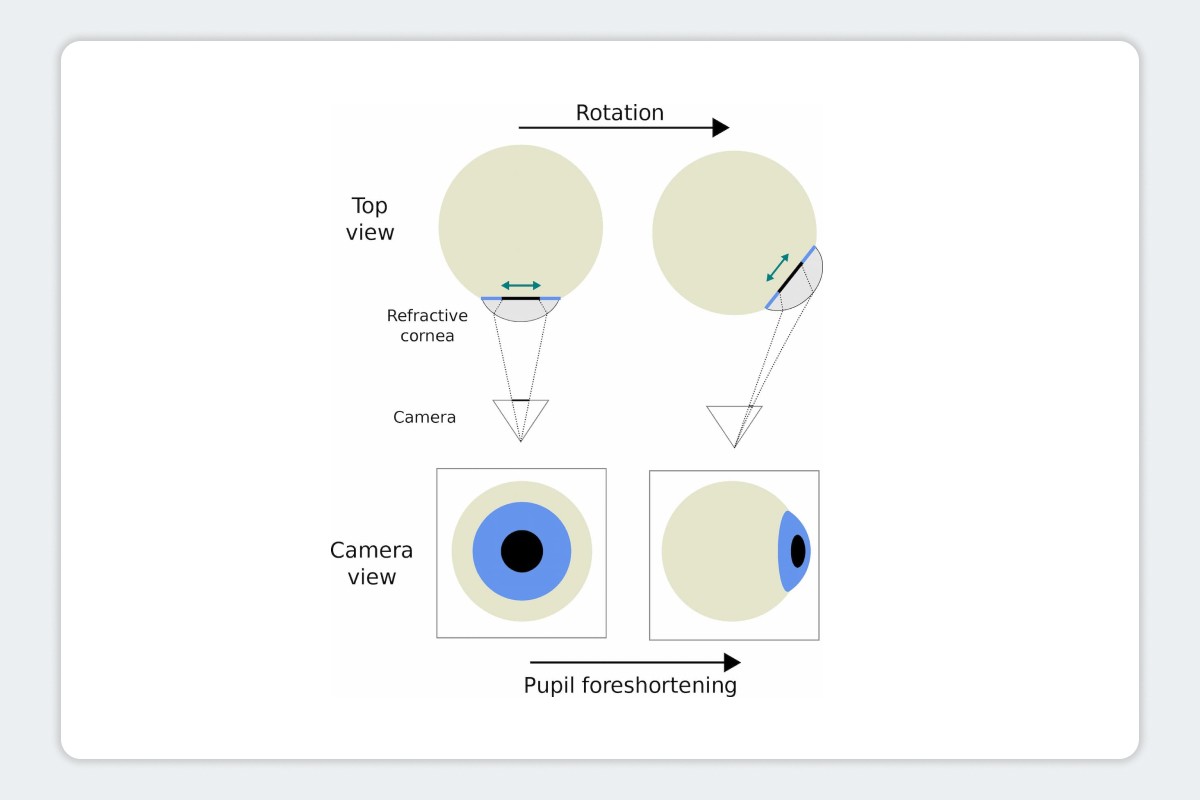Gaze-angle dependency of pupil-size measurements in head-mounted eye tracking
News
Author(s): Pupil Dev Team
August 6, 2021

Pupil Labs published a new peer-reviewed article in the scientific journal Behavior Research Methods!
The human visual system is effective over a range of environmental lighting conditions, partially due to the highly adaptive size of our pupils. Pupil size is also affected, however, by physiological and psychological factors, such as fatigue and mental workload. A growing number of researchers are working towards developing the analysis of pupil-size changes into reliable diagnostic tools. At Pupil Labs we are working hard on improving existing non-invasive measurement methods and innovating new methods!
One of the key challenges for image-based approaches is to account for pupil foreshortening, i.e. the change of apparent pupil size resulting from shifts in gaze direction (see header image). In this scientific work, we present an in-depth analysis of three distinct approaches to pupil-size measurement, all based on eye images recorded with a Pupil Core headset. In particular, we show that the most recent algorithm developed by Pupil Labs (which takes into account corneal refraction in a realistic way) is the most successful in providing pupil-size measurements which are independent of gaze direction.
Check out the full paper here.
Petersch, B., Dierkes, K. Gaze-angle dependency of pupil-size measurements in head-mounted eye tracking. Behav Res (2021). https://doi.org/10.3758/s13428-021-01657-8